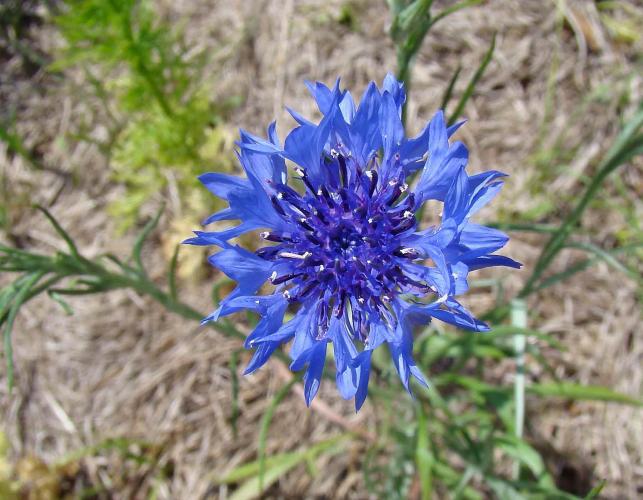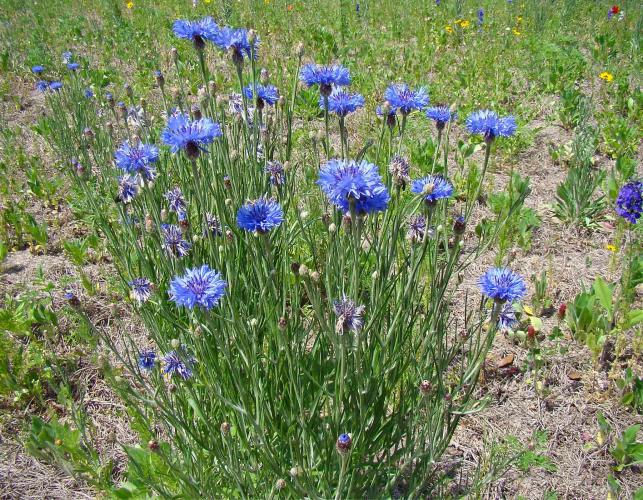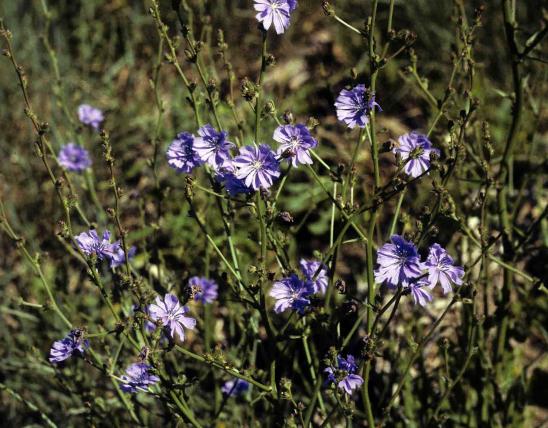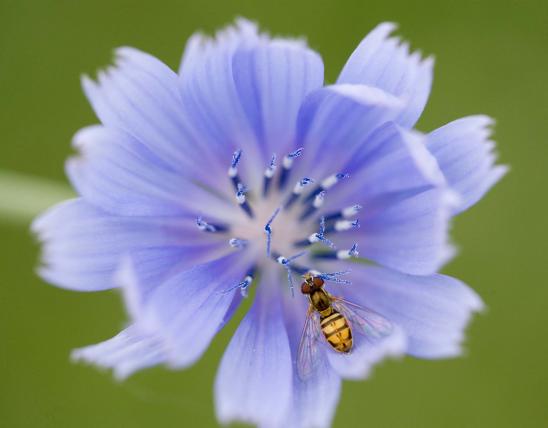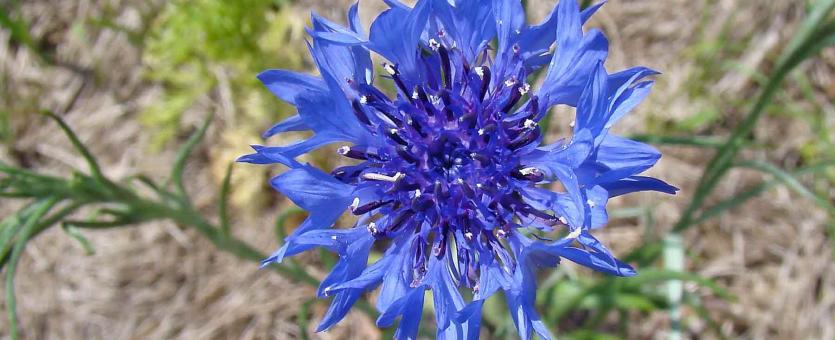
A native of Europe, cornflower is a popular garden flower that often escapes to nearby areas. It is a much-branched herbaceous annual. Flowerheads are about 1 inch across with a vase-shaped involucre (the bracts), in cornflower blue, pink, or white. A member of the thistle tribe, this composite lacks true ray florets; instead, the outer florets of each head have enlarged corolla tubes that at a glance look something like the strap-shaped extensions of true ray florets. Blooms May–September. Leaves narrow, linear, sharply pointed, alternate.
Similar species: There are 10 Centaurea species recorded for our state. Of special concern is the invasive spotted knapweed, C. stoebe. Its principal leaves are deeply lobed, the florets are light purple to pinkish purple or rarely white, the flowerheads more thistlelike.
Height: to 3 feet.

Scattered statewide. Apparently it is not as common in our state as was once thought.
Habitat and Conservation
Occurs in banks of rivers, ledges of bluffs, fallow fields, railroads, roadsides, and open, disturbed areas. A native of Europe, cornflower is a popular garden flower that often escapes to nearby areas. It may cover entire fields. Cornflower seeds are often included in packets of mixed wildflower seeds, so be aware that many so-called wildflower seed mixes include seeds for nonnative wildflowers.
Status
Cornflower used to be a common weed in European grain fields, where the word “corn” refers to any cereal grain, such as wheat, oats, rye, and barley. In Germany it’s called “kornblume.” American corn, also called Indian corn or maize (Zea mays), acquired its name because it is an American cereal crop. Native wild European populations of cornflower are endangered in Great Britain due to aggressive herbicide use, elimination of brushy edges of crop fields, and other modern agricultural practices.
Human Connections
Cornflower has deep roots in Europe as a medicinal herb and a national and political symbol in Germany, Austria, Finland, France, Sweden, and Estonia. It’s a beloved garden flower and appears in bridal bouquets. Its intense blue color is admired by painters, designers, and crayon manufacturers.
Where did the name come from? Cornflower used to be a common weed in European grain fields, where the word “corn” refers to any cereal grain, such as wheat, oats, rye, and barley. In Germany it’s called kornblume. American corn, also called Indian corn or maize (Zea mays), acquired its name because it is an American cereal crop.
Native wild European populations of cornflower are endangered in Great Britain due to aggressive herbicide use, elimination of brushy edges of crop fields, and other modern agricultural practices.
Ecosystem Connections
Bees, flies, butterflies, aphids, beetles, and other insects gain nourishment from cornflower’s nectar, pollen, sap, and foliage. Birds eat the seeds.
